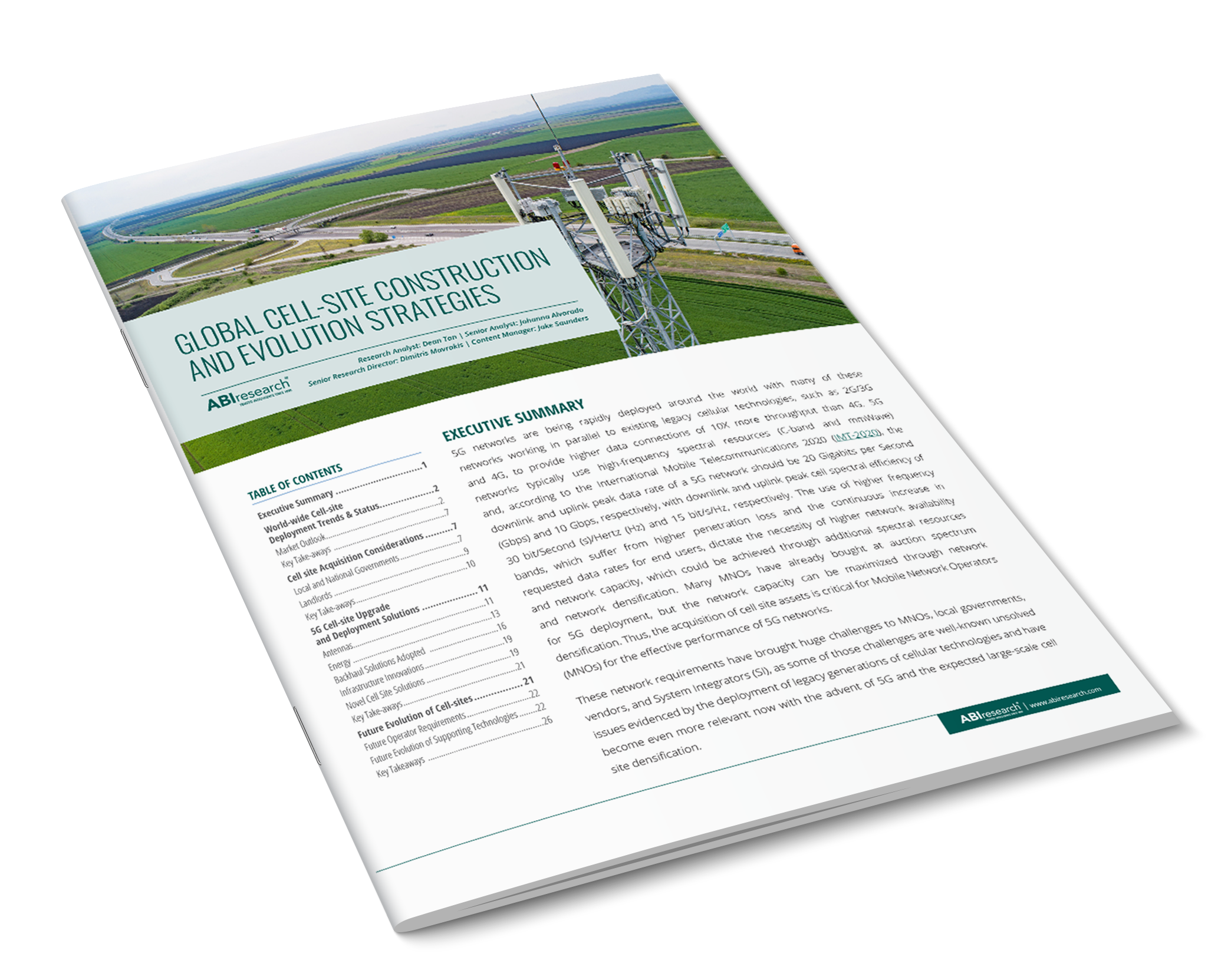5G networks are being rapidly deployed around the world with many of these
networks working in parallel to existing legacy cellular technologies, such as 2G/3G and 4G, to provide higher data connections of 10X more throughput than 4G. 5G networks typically use high-frequency spectral resources (C-band and mmWave) and, according to the International Mobile Telecommunications 2020 (IMT-2020), the downlink and uplink peak data rate of a 5G network should be 20 Gigabits per Second (Gbps) and 10 Gbps, respectively, with downlink and uplink peak cell spectral efficiency of 30 bit/Second (s)/Hertz (Hz) and 15 bit/s/Hz, respectively.
The use of higher frequency bands, which suffer from higher penetration loss and the continuous increase in requested data rates for end users, dictate the necessity of higher network availability and network capacity, which could be achieved through additional spectral resources and network densification. Many MNOs have already bought at auction spectrum for 5G deployment, but the network capacity can be maximized through network densification. Thus, the acquisition of cell site assets is critical for Mobile Network Operators (MNOs) for the effective performance of 5G networks.
These network requirements have brought huge challenges to MNOs, local governments, vendors, and System Integrators (SI), as some of those challenges are well-known unsolved issues evidenced by the deployment of legacy generations of cellular technologies and have become even more relevant now with the advent of 5G and the expected large-scale cell site densification.


